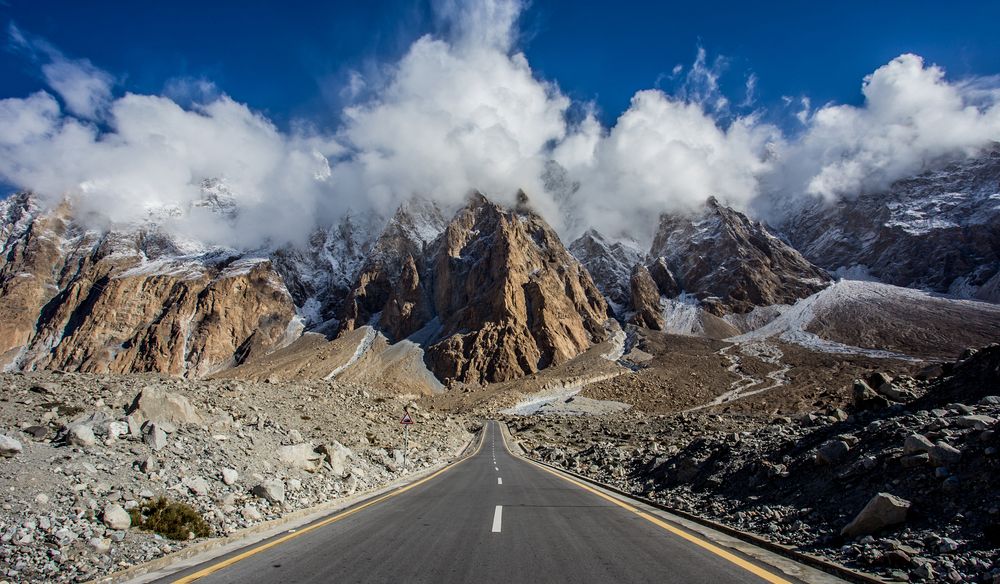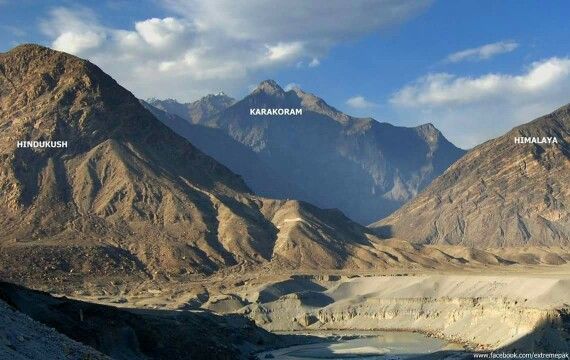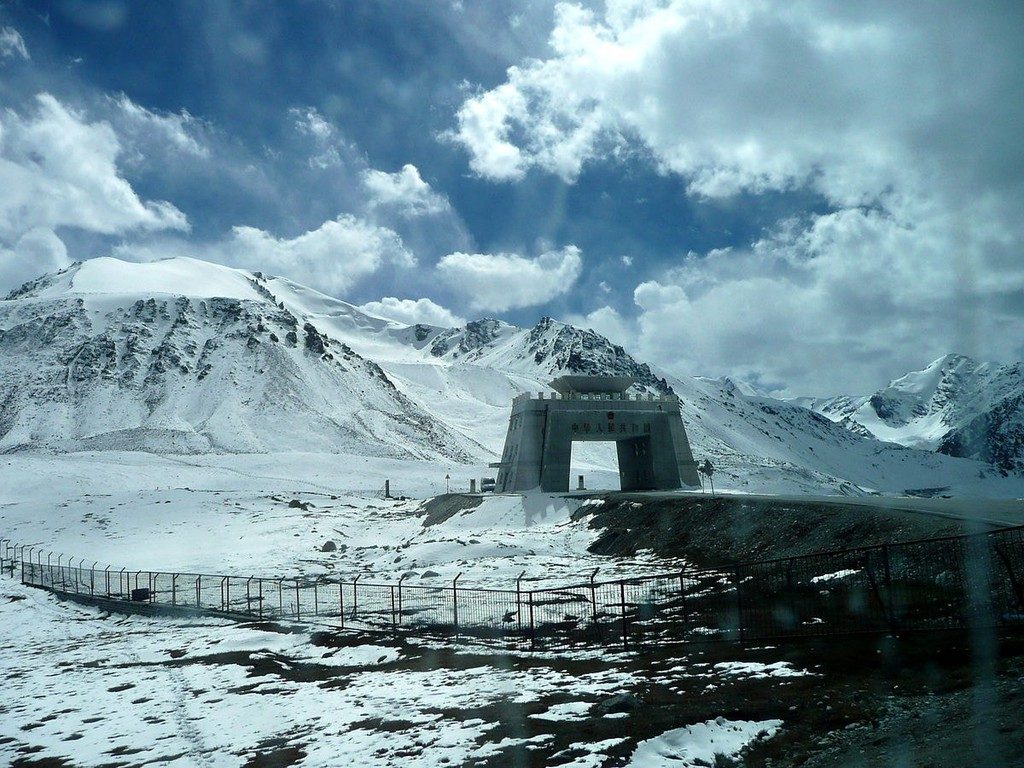1. THE WORLD’S LARGEST DEEP SEAPORT

Pakistan’s superior position in Asia makes it a hub of trade in the region and that is to increase further in the coming time as the country is working inseparably with China on CPEC plan to build up the infrastructure of the Gwadar port at the Arabian Sea, Baluchistan which is the largest natural deep port of the planet. The port will go about as a portal for western China and possibly for the landlocked Central Asian countries through the significant sea route of the Strait of Hormuz.
2. WORLD HEIGHT NUMBER OF GLACIERS OUTSIDE POLAR REGION

With 7,253 known glaciers, including 543 in the Chitral Valley, there is more glacial ice in Pakistan than anywhere on Earth outside the polar regions, according to various studies. Those glaciers feed rivers that account for about 75 percent of the stored-water supply in the country of at least 180 million
3. HOME TO WORLD LONGEST GLACIERS OUTSIDE POLAR REGION 3rd, 5th, 7th

- The Biafo Glacier is a 67 km (42 mi) long glacier in the Karakoram Mountains of Gilgit Baltistan and Azad Kashmir which meets the 49 km (30 mi) long Hispar Glacier at an altitude of 5,128 m (16,824 ft) at Hispar La (Pass) to create the world’s longest glacial system outside the polar regions.
- Baltoro Glacier Located in the mighty Karakoram Range is 39 mi (63 km) long. If a 14-day trip doesn’t put you off, explore some of the grandest landscapes on Earth. Gape at peaks that rise up to 26,000 ft (8,000 m) and feel small and humbled. While it’s not easy to reach this frozen titan, you’ll be rewarded both mentally and physically.
- Batura Glacier 57 kilometres (35 mi) long, is one of the largest and longest glaciers outside of the polar regions. It lies in the Gojal region of Gilgit-Baltistan in Pakistan. It is just north of the massifs of Batura, at 7,795 metres (25,574 ft), and Passu, at 7,500 metres (24,600 ft)
4. WORLD’S HIGHEST PAVED ROAD

It is also known as the eighth wonder of the world or the China-Pakistan friendship highway. The Karakoram Highway (KKH) is the world’s highest paved road ever constructed. The roads runs for 800 miles from Abbottabad in Pakistan to Kashgar in Xinjiang, West China. The highest point of the street lies at the Khunjerab Pass at an elevation of 4800 meters. Each turn of the highway is accompanied by extraordinary views as the way runs through hills, mountains, valleys, glaciers and along lakes and streams.
5. JUNCTION OF THE THREE HIGHEST MOUNTAIN RANGES


- Himalayas –Pakistan, Nepal, India, China, Bhutan; highest point: Everest in Nepal
- Karakoram – Pakistan, China, India; highest point: K2 in Pakistan, 8611 meters above sea level.
- Hindu Kush – Pakistan, Afghanistan; highest point: Tirich Mir in Pakistan, 7708 meters above sea level.
6. HOME TO WORLD’S HIGHEST PEAKS

Five of the world’s fourteen highest mountain peaks, including the renowned K2 and Nanga Parbat, are in Pakistan.
- K2 88611m
- Nanga Parbat 8126m
- Gasherbrum I (K5) 8080m
- Broad Peak 8051m
- Gasherbrum II (K4) 8035
7. WORLD’S SECOND-LARGEST SALT MINES

Khewra Mines of Pakistan produce 325,000 tons of salt every year and are mythical to be found by Alexander’s Army by chance when their horses started licking the salts while the soldiers rested. In this manner, resulting in the disclosure of the modern world’s second-largest salt mine. The mammoth mines have more than 40 km of passages alongside their mosque inside. To attract tourists salty miniature variants of the Great Wall of China, Minar-e-Pakistan and Badshahi Mosque are found inside Khewra Salt mines.
8. WORLD LARGEST IRRIGATION SYSTEM

The economy of Pakistan is largely depending on its agricultural products. Its share of GDP mainly comes from different products of agriculture. Therefore the importance of water is more for Pakistan as the agriculture sector of Pakistan is mainly depending upon the water and different resources of water that are available in Pakistan.
In order to fully utilise the river water resources, the IBIS has emerged as the largest contiguous irrigation system in the world. The Indus Basin Irrigation System of Pakistan has three large dams, eight five small dams, nineteen barrages, twelve inter-river link canals, forty-five canal commands and 0.7 million tube wells.
9. ONE OF OLDEST CIVILISATION OF THE WORLD

There are six ancient civilisations in the world as recognised by anthropologists. In this case “ancient” refers to the first civilisations of the world to utilise agriculture. The progress they made led to the development of all subsequent human civilisations.

Above is a chart I built previously to compare the ancient civilisations. Each was able to accomplish agriculture based on geographical and climatic circumstances. Nature made farming easy in those places, which facilitated urbanisation
10. HIGHEST BORDER CROSSING IN THE WORLD

Khunjerab Pass, the highest border-crossing in the world. Khunjerab Pass (sometimes called Khunerjab Pass) is a high mountain pass on the northern border of Pakistan with China, at an elevation of 4.733m (15,528ft) above the sea level


Leave a Reply